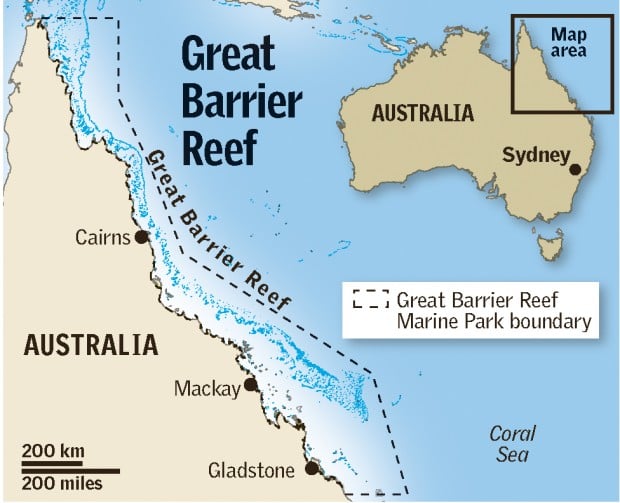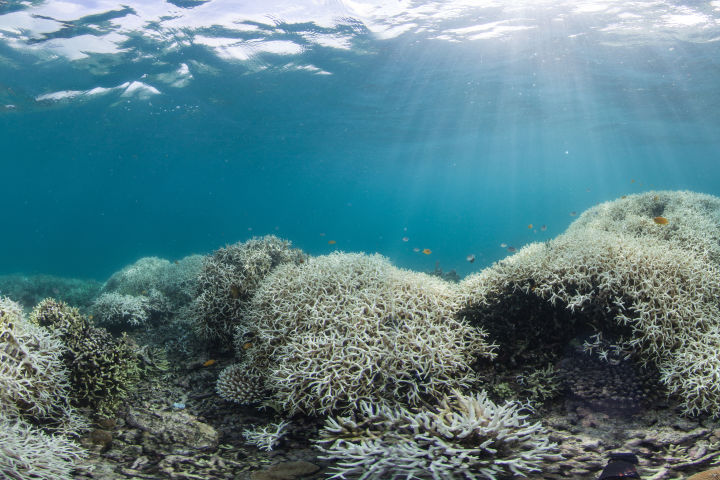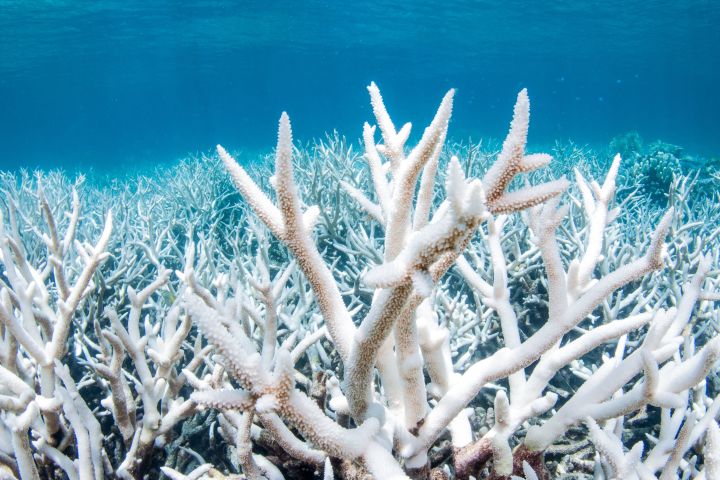The Great Barrier Reef. It is one of the most majestic ecosystems on planet earth, and it is dying. Before we dive into things, I should provide you with some background knowledge. The Great Barrier Reef is commonly referred to as one of the seven wonders of the world. The reef is off the coast of Queensland, Australia and measures 1,429 miles over an area of approximately 133,000 square miles according to National Ocean Service Data. It consists of nearly 3,000 individual reefs. These metrics make The Great Barrier Reef the world’s largest coral reef. In fact, The Great Barrier Reef is so big that it can be seen from the International Space Station.
The idea that something that big is dying can be hard to wrap your head around. However, if we examine the causes and the missteps that have led to this moment, you will begin to realize that the decay of the Great Barrier Reef is not as shocking as it seems.
The most dangerous cause of the decaying Great Barrier Reef, and the one that I will be highlighting in today’s post, is climate change. The sharp increase in greenhouse gas emissions in Australia, as well as the rest of the world, can be directly linked to the decaying of the Great Barrier Reef. This has been common knowledge for the better part of two decades, yet greenhouse gas emissions are still increasing in Australia. According to The Guardian, Australia has the highest greenhouse gas emissions from coal power in the entire world.

This overuse of fossil fuels and increase in greenhouse emissions leads to an increase in temperature. And unfortunately, this increase in temperature has been devastating for the Great Barrier Reef. That is because these rising temperatures leads to a phenomena called coral bleaching. In order to fully understand what bleaching is and how catastrophic it can be, I need to give you a quick biology crash course. According to The Great Barrier reef Foundation, bleaching is a direct result of a lack of an algae called zooxanthellae. Zooxanthellae is an algae that grows inside a coral’s polyps tissue. This algae gives the coral its vibrant and bright color. More importantly, this algae removes waste from the coral and uses it to produce nourishment in a process called photosynthesis. When corals gets stressed, they expel large amounts of zooxanthellae. This deficiency in zooxanthellae weakens the coral and makes it loose color, turning the coral transparent and revealing their skeletons. The bleaching itself doesn’t kill the coral, but it puts the coral at a much higher risk of starvation and disease. And since this bleaching is occurring at such a large scale, starvation has run ramped and despise has spread from coral to coral like an epidemic.


Not only are these bleaching events crippling the fully grown coral (as depicted above), but bleaching events also affect young and maturing coral. According to BBC News, damaged younger coral is struggling to regenerate due to the fact that most of the adult coral has died. A coral population consists of millions of small and infant coral as well as a significant number of adult coral. These coral of all ages work harmoniously in order to keep the population thriving. However, due to the fact that a majority of the adult coral is dead because of bleaching, there is no breeding. This means that the creation of new coral slows down significantly, and sometimes stops altogether. This lack of breeding leaves the younger coral extremally vulnerable.
Coral bleaching is catastrophic for coral of all ages and breeds. Coral bleaching not only robs the coral of its bright and vibrant color, but it also starves them and leaves the coral highly susceptible to disease. The bleaching events also inhibit and sometimes altogether halt adult coral from breeding, which in turn leaves the younger coral exceptionally vulnerable. With all of these dire consequences, it is safe to assume that coral bleaching is a major cause of the slow but steady decaying if The Great Barrier Reef. And coral bleaching is a direct effect of rising ocean temperatures. Australia’s overuse of fossil fuels, especially coal, leads to significant climate change in and around the country. This climate change has caused the ocean temperatures on the coasts of Australia to increase. Since the Great barrier Reef is located off the coast of Queensland (In the “hot zone” for all intensive purposes), the rising ocean temperatures are significantly crippling and killing the coral due to coral bleaching caused by those increased sea temperatures.
Mustapha
February 4, 2022 at 8:30 pmHey Ethan! This was a great post. Thank you for educating me on a topic I would’ve otherwise not known much about. It’s interesting to think about how there are still droves of climate change deniers in the world despite all the empirical data that demonstrates the reality of climate change. The changes to the Great Barrier Reef that you mentioned are relatively drastic, and it’s really sad to hear that. I feel that it’s very easy for humans to detach from things that don’t happen directly to them, and climate change is no different. I couldn’t imagine a world where my drinking water gradually became less clear or where the air was difficult to breathe. Unfortunately, that’s what’s occurring in ecosystems around the world. Thank you for shedding light on this topic.